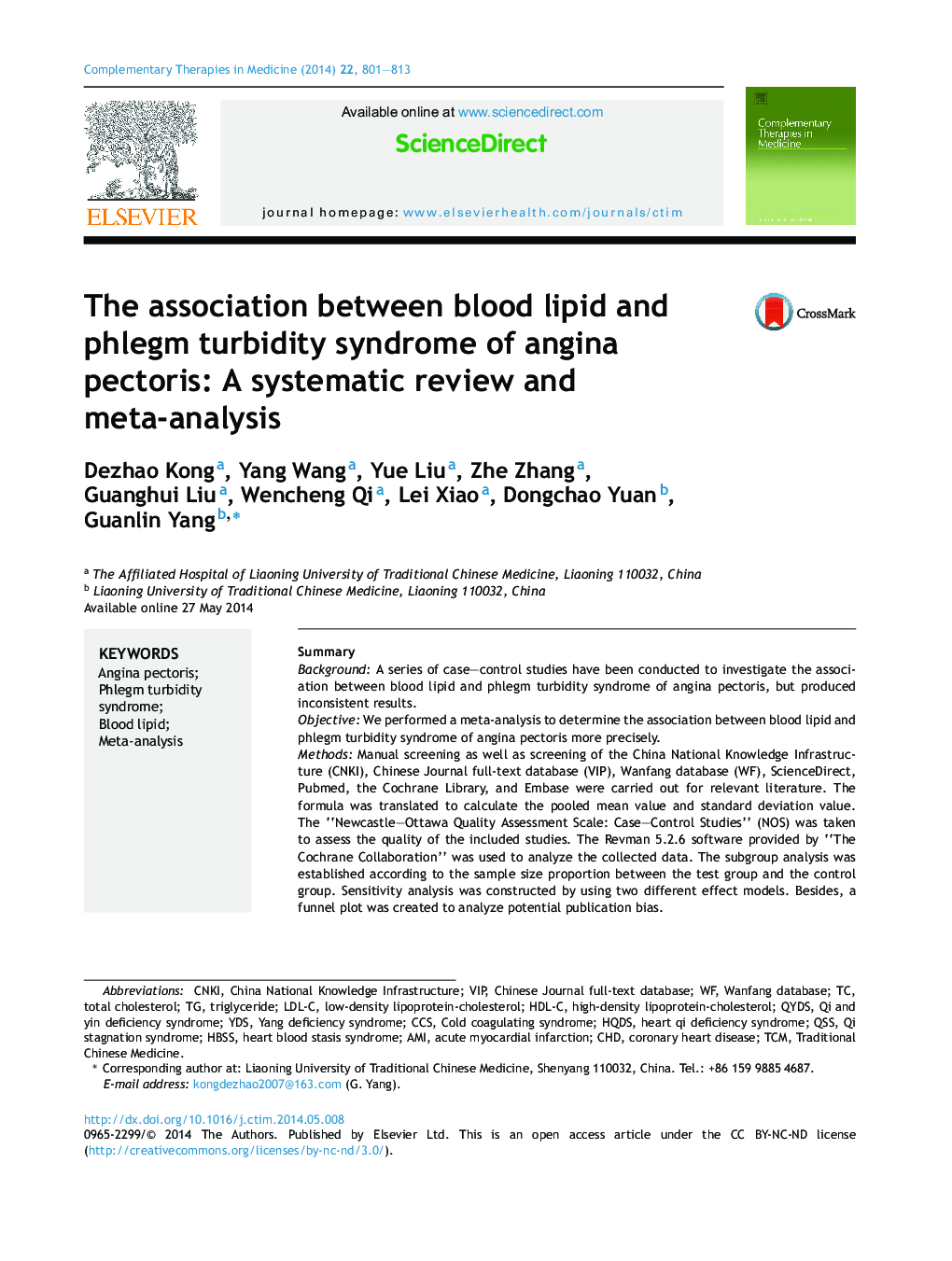| Article ID | Journal | Published Year | Pages | File Type |
|---|---|---|---|---|
| 5865702 | Complementary Therapies in Medicine | 2014 | 13 Pages |
SummaryBackgroundA series of case-control studies have been conducted to investigate the association between blood lipid and phlegm turbidity syndrome of angina pectoris, but produced inconsistent results.ObjectiveWe performed a meta-analysis to determine the association between blood lipid and phlegm turbidity syndrome of angina pectoris more precisely.MethodsManual screening as well as screening of the China National Knowledge Infrastructure (CNKI), Chinese Journal full-text database (VIP), Wanfang database (WF), ScienceDirect, Pubmed, the Cochrane Library, and Embase were carried out for relevant literature. The formula was translated to calculate the pooled mean value and standard deviation value. The “Newcastle-Ottawa Quality Assessment Scale: Case-Control Studies” (NOS) was taken to assess the quality of the included studies. The Revman 5.2.6 software provided by “The Cochrane Collaboration” was used to analyze the collected data. The subgroup analysis was established according to the sample size proportion between the test group and the control group. Sensitivity analysis was constructed by using two different effect models. Besides, a funnel plot was created to analyze potential publication bias.ResultsNo statistically meaningful difference existed between the test group and control group of total cholesterol (TC) and low-density lipoprotein-cholesterol (LDL-C) in non-Qi and yin deficiency syndrome (QYDS) and non-Yang deficiency syndrome (YDS) subgroup, whereas the two biotic indicators in the test group were higher than the non-phlegm syndrome group in other subgroups. Triglyceride (TG) in phlegm syndrome group showed superior to non-phlegm syndrome group in the rest subgroups except for the non-CCS (Cold coagulating syndrome)-non-YDS subgroup. High-density lipoprotein-cholesterol (HDL-C) levels of the phlegm group were lower than that of the non-phlegm group in all subgroups.ConclusionWhen comparing with Traditional Chinese Medicine (TCM) syndromes of asthenia nature, such as YDS, QYDS, and heart qi deficiency syndrome), the levels of TG, TC, and LDL-C were higher in phlegm turbidity syndrome. However, for sthenia syndromes such as Qi stagnation syndrome (QSS), heart blood stasis syndrome (HBSS), and CCS, there was no obvious difference. Furthermore, HDL-C levels in the phlegm turbidity group were lower than those of the non-phlegm group. Nevertheless, these results should be confirmed with further studies.
